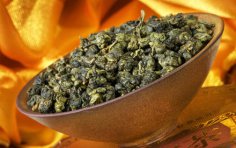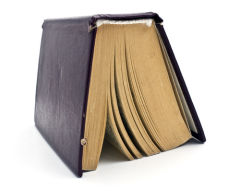
I think it's hard to find anyone who hasn't tried aromatic tea. Waking up in the morning, it's wonderful to have a cup of your favorite drink that invigorates, invigorates, and energizes you for the entire day. After all, a good mood in the morning is half the success of the day! What is this magical drink that has captivated the whole world?
The origin of tea
The first mention of tea appears in the biography of a Chinese official who died in 273 CE. However, long before that, Confucius (551–479 BC) mentioned a plant in one of his works that was very similar to tea in its description. The first mention of tea in English sources was by R. Wickema, a representative of the English East India Company. It is also known that in the mid-18th century, Thomas Harvey, the owner of a famous coffee house that later became known as “Harvey's,” acquired a large quantity of tea.
Today, tea is grown in many countries. In 1826, the Dutch brought tea to the island of Java, and later the British, renowned tea lovers, brought it to India. And when a fungus destroyed the coffee plantations in Sri Lanka, tea was planted there.
Tea cultivation and its price
Have you ever been to a tea plantation? It's truly a magical place. The higher the plantation, the better the tea it produces. The Tea Museum is located on the grounds of the Lugu (Deer Valley) farm in Taiwan. Interestingly, green tea and oolong tea are rolled before drying. In the past, this tea was tied in a bag and trampled. Now, of course, this process is performed by machines.
High-quality tea is actually quite expensive. Excellent oolong tea (which can be translated as turquoise, jet-black, or blue-green) costs around $75 per kilogram. Other varieties cost up to $95. And if the tea is a competition winner, its price can reach $2,200 per kilogram.
Variety of tea
Westerners prefer black tea. But did you know that in the East, it's called red tea? To make this tea, young shoots are first withered, rolled, and then fully fermented. The final step is drying.
Oolong tea undergoes a natural fermentation process during production. This is achieved by storing the harvested tea in open, low boxes. Once the desired fermentation level is reached, the leaves are roasted. It is then consumed without milk, sugar, or lemon.
Green tea undergoes the shortest fermentation process. In Japan, India, and Sri Lanka, tea leaves are sterilized with steam to minimize fermentation. The Chinese use dry heat for this purpose.
Tea room and tea drinking
There's a wonderful tea room in the mountains near Taipei. It has a truly Chinese atmosphere. The room resembles a gazebo, where you can drink tea in the fresh air, listening to the sounds of nature.
The menu offers a variety of delicacies to accompany your tea. Bean biscuits, watermelon seeds, dried tofu, rice cakes, and canned or dried fruits are among the offerings. These sweets perfectly complement the tea, making it a true tea lover's paradise.
Tea drinking is an art. First, pour boiling water over the teapot and cup, letting the water drain through the holes onto a tray. A small amount of tea is poured into the bottom of the teapot, hot water is added, and the tea is immediately poured out. This is to rinse the leaves and appreciate the aroma. The tea is steeped again for about a minute. Then it is poured into tall, “aromatic” cups, covered, and turned upside down. Empty cups are set aside, allowing us to smell the pleasant aroma. The tea is ready; drink and enjoy!
It's hard to imagine life without tea. Every family has its own preferences and secrets for tea drinking. But no matter how delicious the tea I drink, I still remember the aroma of my childhood. Grandma's tea made from raspberry, currant, or pear branches is a true masterpiece! Because every grandmother has her own secrets, based on the secret ingredient—love and care. But that's another story. Enjoy your tea!





